Proctor's Mountain Classroom program turned our focus to Colorado's grasslands as we drove to Chico Basin Ranch to study rotational grazing and ranch management. Our experience was facilitated by Lee Derr, a local bird banding expert and grassland ecologist. The next stop was St Francis, SD, on the Rosebud Reservation. There we spent time with the White Hat family, whose longstanding relationship with Proctor has been a fixture of Mountain Classroom for years.
Video edited by Matt Arruda '17
Mo Nguyen ’18:
Colorado continues to surprise us with its scenery and its people. Transitioning from Prospect Mountain at 11,000 feet and the woodshop in Beulah Valley, we drove northeast to Chico Basin Ranch. Chico Basin Ranch is an 87,000-acre family-run, working cattle ranch that operates on the high prairie 30 miles southeast of Colorado Springs.
The road to the ranch was bumpy and muddy. The bus was shaking intensely during the drive, jostling backpacks from their resting spots in their cubbies. When we arrived, the bus had a fresh coat of mud.
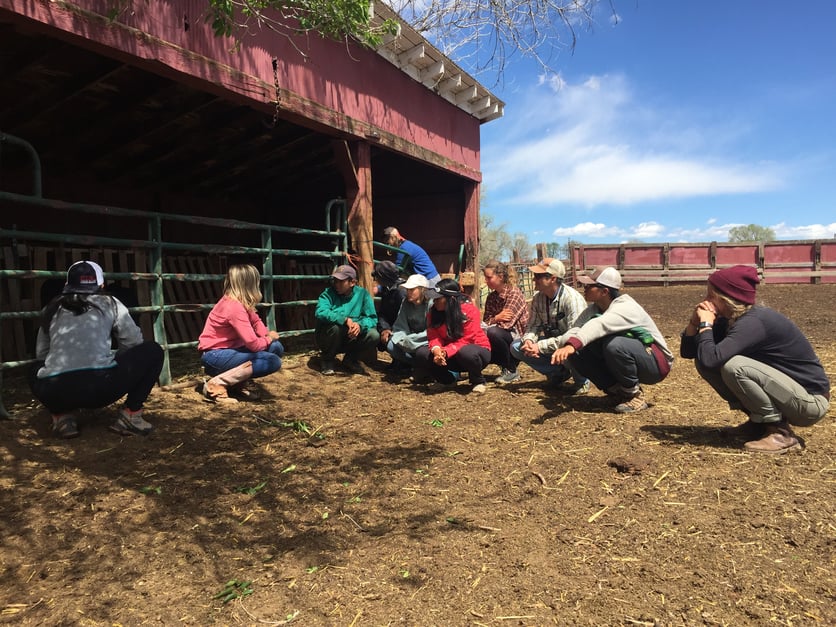
We spent our morning learning about bird banding. Lee gave us a lesson on the bird banding process, which requires concentration and agility. An essential part of banding is keeping the wild birds captive for the shortest time possible. The day starts at 6 AM with a net strung between poles to catch birds. The mechanism is easy and harmless. Normally, the birds fly into the net and fall into it. The bird-bander then quickly puts the birds into small cotton bags before documenting the features of the individual birds and attaching a metal ring to one leg. We were introduced to some of the most common songbirds in Colorado such as white crowned sparrow, yellow-rumped warblers, and more. Lee also told us stories of small birds traveling great distances as we discussed the birds’ migratory patterns.
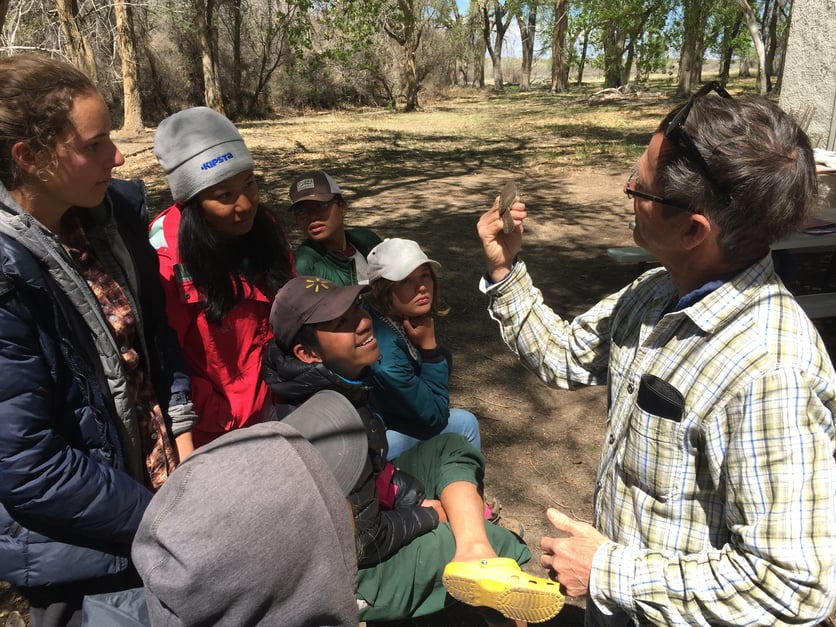
After the bird banding lessons, we drove up the hill to the ranch headquarters. Our guide was Becca who was originally from North Carolina. Becca spent her 20s working for a TV show in L.A. and one day decided to apply for an internship at Chico Basin Ranch. The lifestyle of being a rancher fit so she decided to stay and work. Becca emphasized the importance of horses at Chico Basin Ranch. Rather than trucks and trailers, they use horses for their daily ranch work. Horses are their co-workers. From their experience, being on horseback is the best way to stay in tune with the land and the wildlife on the ranch.
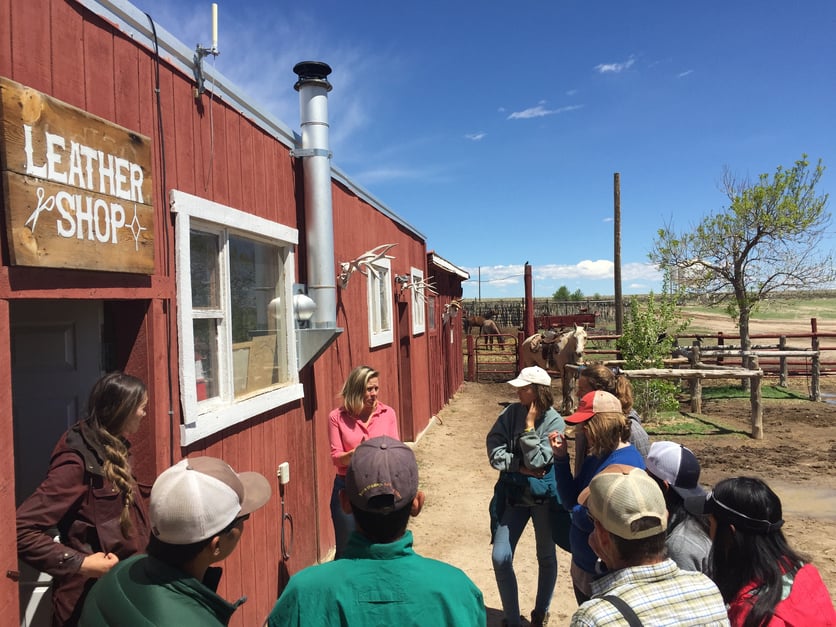
We spent our evening dinner with the ranch team. As guests, we brought two bowls of salad. One was fruit salad filled with watermelon, mango, kiwi, blueberry, strawberry and pineapple. The other was spinach salad with blueberries, currants, sliced almonds, and goat cheese. The burgers were grilled to perfection, served with sides of avocado, lettuce and tomatoes. As the sun was setting on the Chico Basin Ranch, we enjoyed dinner together as one big family.
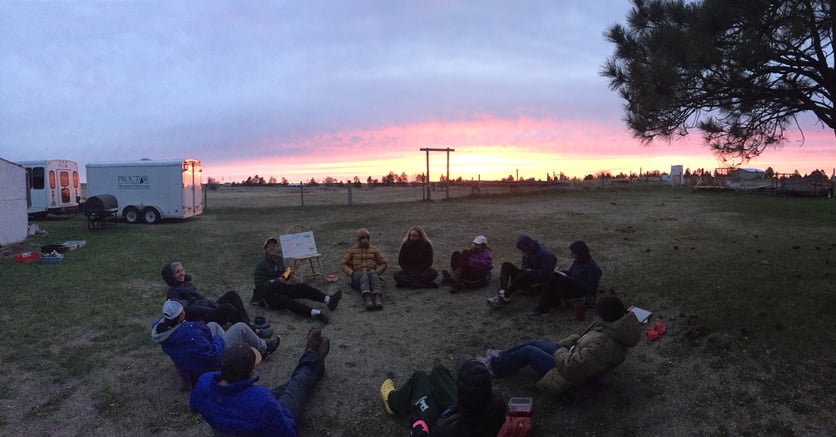
Kelly ’17:
Darkness. My eyes were wide open, but all I could see was the faint glow of the burning red stones.
When one of our five senses gets taken away, the other four become amplified. The hissing sound begins from the moment the ice cold water makes contact with the hot stones, conjuring up a wave of steam that rises to the wool ceiling of the sweat lodge. My clothes become soaked, and a stream of sweat combined with the steam makes its way down my forehead. As my body adjusts to the heat, Duane Hollow Horn Bear and Mark White Hat’s singing becomes clearer to me. The soulful Lakota songs were our only companion in the lodge aside from the darkness and the hissing.
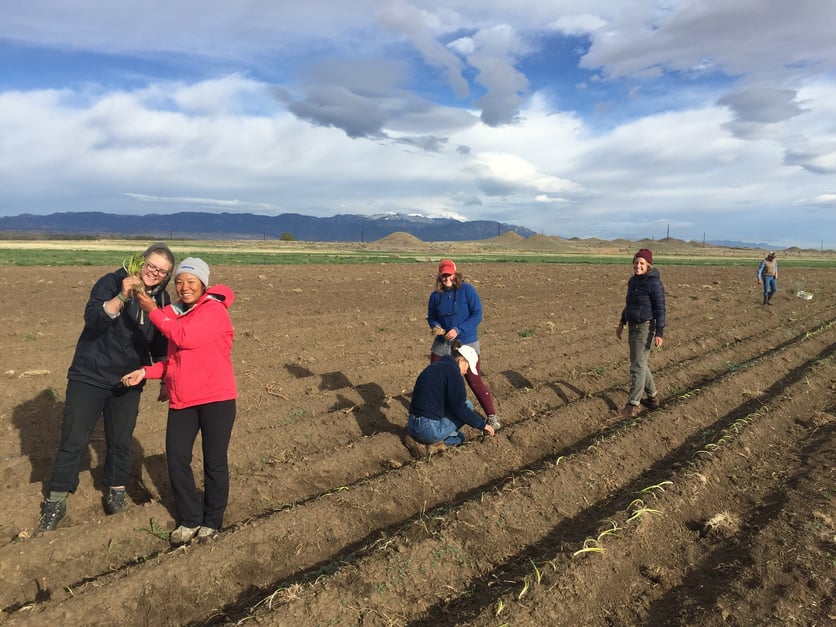
We were participating in a sweat lodge ceremony on the Rosebud Reservation in South Dakota. JR White Hat, whose family has a long-lasting relationship with Proctor, made this exceptional experience available to us. In Lakota culture, the Inipi ceremony, also called the sweat lodge ceremony, is a physical and mental cleansing performed when people need help or inspiration. The sweat lodge is a round and fully-covered building that has a hole in the middle for the hot stones. After entering the lodge clockwise, Mark, who assisted Duane in performing the ceremony, brought in several red hot stones. Then he closed the doorway and joined Duane’s singing. As the water was poured onto the stones, the steam formed instantly and raised the room temperature inside the lodge until it would open our pores and cleanse our bodies of impurities. Managing to stay in the extreme heat posed a great mental challenge for us, but everyone in our group accepted the challenge and pushed their limits.

During the ceremony, I asked for the people I love to stay as healthy and joyful as possible. At other times, I tried to embrace the heat fully and reflect on my thoughts. I felt a deep sense of connection with the darkness, and with every single person around me even though I couldn’t see them. Once in a while, Duane would let us take a break by opening the doorway and letting the fresh, cool air blow in. Then Duane would share his personal stories as a Lakota tribe member and veteran of the Vietnam War, who after coming home was mentored in Lakota cultural practices and used them to help people.
Duane’s story reminded me of the Comparative Religion class we had on campus. In winter term, we read Zuya: Life’s Journey by Albert White Hat, JR White Hat’s father and Mark’s grandfather. Although Lakota culture is considered a “spirituality” rather than “religion,” its core understandings resonated with me the most, especially its emphasis on the phrase “Mitákuye Oyás’iŋ”—we are all relatives—including every single creature in nature, whether sentient or not.
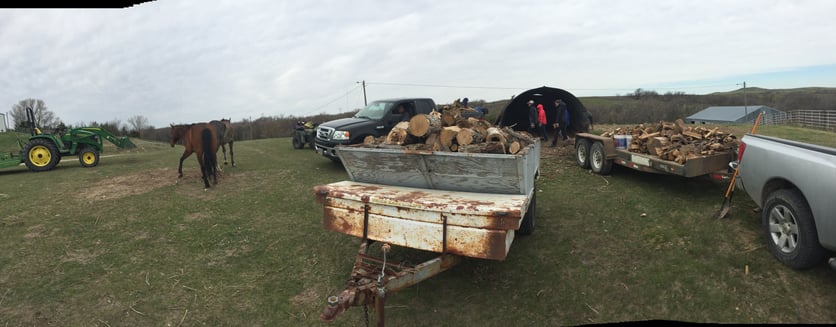
The inclusiveness in Lakota culture is also demonstrated by their way of treating guests. “No matter what condition we are in, we always offer our guests the best we have,” said JR White Hat on the first day we met him. The next day after we finished helping him move a woodshed, the White Hat family invited us into their warm house saturated with the aroma of burritos and offered us the most delicious feast I’ve ever had. There were homemade tortillas, beans with and without bacon, pork gravy, and salsa.
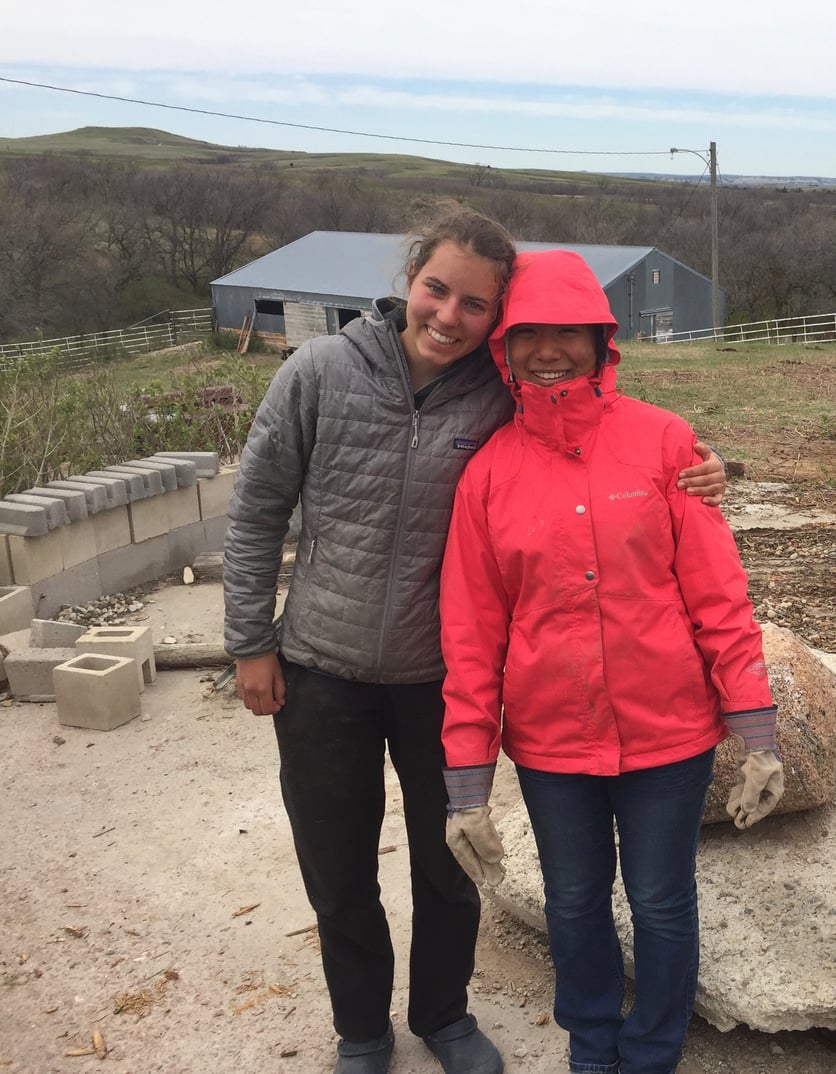
We spent our last day in the town of Mission helping in the Tree of Life Soup Kitchen and Thrift Store. Seeing a native North American tribe with its rich culture now suffering from poor farmlands and low financial income, I felt grief for the condition on Rosebud Reservation. Yet I’m glad that Proctor has maintained a positive relationship with the White Hat family to do our best to support and address their needs and educate more students on the history of Native Americans. Native Americans are not mysterious; they are not dangerous; they are normal human beings like you and me who were oppressed and traumatized decades ago and now are slowly but steadily recovering. They share the same Mother Earth with us—after all, we are all relatives.








